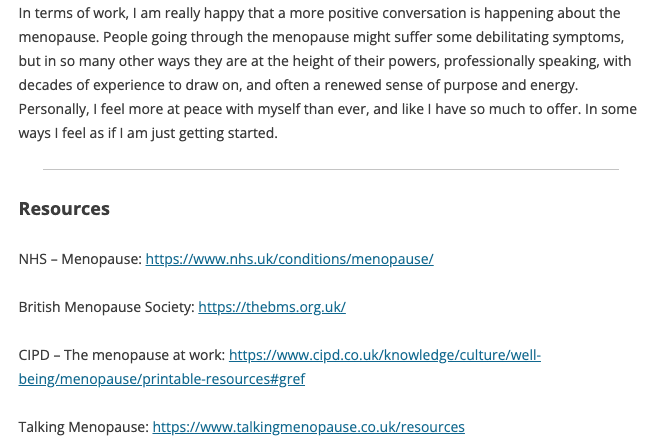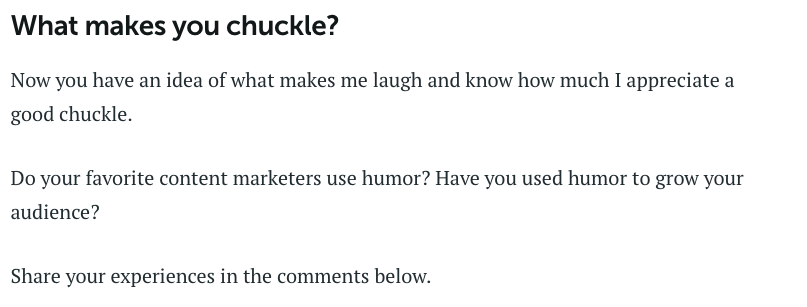
How to End a Blog Post and Inspire Action
You’ve written an engaging introduction and worked hard on your body content, but now comes the real test – how to end your blog post. As we will explore, there are a number of ways to end a blog post (spoiler alert: Signing off with “The End” isn’t one of them). What you include will depend on what you want to achieve from the post. Bear that in mind as you read on.
Why Does a Blog Post Need a Conclusion?
A conclusion is so much more than simply a signal to your reader that they’ve reached the end of the post. A good blog conclusion needs to inspire the reader to take further action. The type of action will depend on the purpose of your post. For example, you might want your reader to:
- Read more of your posts
- Share your post with others
- Engage your services
- Purchase a product
- Sign up for something (e.g., a free trial or a newsletter)
- Do something for themselves
And, at the very least, you will want your reader to remember what you’ve said in the post. The conclusion is the place to do this because it is the last thing your reader will read – and, therefore, the thing they are most likely to remember.
How to Write a Strong Conclusion
So, what do you want to achieve from your post? What would you like your reader to do after reading it? Answering those key questions will help you figure out what to include in your conclusion to make it a strong one. Here are our top tips.
Summarize Your Key Points
We’re not suggesting for a moment that your writing will have caused your reader’s attention to drift midway through your post. However compelling your post, your reader will want – and probably need – a neat summary of the main points they should remember. Providing that in the conclusion will assist not only the reader who’s diligently read the full post but also the one who’s skimmed through to the end.
Link to Further Information
If your aim is to spark your reader’s interest in a subject, then use your conclusion to show them where they can discover more about it. You could include a link to another post you’ve written, a more in-depth article, or information from another authoritative source. The link doesn’t even have to be something in writing; if you’ve got a podcast, for example, link to that.
Entice with a Trailer
While writing your post, you may have had to fight the temptation to go off on a tangent. Perhaps what started as a simple subject opened up a whole raft of related issues. Instead of writing one lengthy post to cover everything, you may have wisely decided to produce a series of posts on a subject. Your conclusion will then become the perfect place to trail the next one, keeping your reader engaged with your blog.
Invite Feedback and Discussion
Allowing your reader to participate is a great way to help them feel more engaged with your blog. But simply having a Comments section is unlikely to be enough. If you hosted a party without sending any invitations, it would hardly come as a surprise if no one turned up. People, whether because they’re busy or polite, tend not to become involved in things without an invitation, so use your conclusion for this. Conversation is more likely to flow if there’s an icebreaker. Think about the kind of feedback or discussion you’d like, and don’t be afraid to ask for it.
Prompt Sharing
Whatever your blog post is about, you probably didn’t write it for just one person to read. You can, of course, hope that a reader who enjoys it will recommend it to someone else, and you may be providing the necessary buttons to allow for easy sharing. Remember what we said about inviting feedback? To go back to the party example, if you would like someone to bring a plus-one, you should make that clear. There’s nothing to lose and everything to gain by adding a simple prompt for your reader to share your post.
Call to Action
What would you like your reader to do after reading the post? We’ve already covered a few possibilities, from which you may spot a growing theme. If there’s something you want your reader to do, then tell them (or, if you’d like, gently guide them)! In blog terms, this is the Call to Action (CTA). As well as the suggestions we’ve already made, this is where you could include a link to:
- A relevant service you provide
- A resource you’ve created
Or the CTA could simply be aimed at helping your reader do something for themselves.
- Asking a question could get them thinking more deeply about a subject.
- Suggesting a simple, practical step could help resolve their problem.
The key is to use your conclusion to provide your reader with the necessary prompt.
Keep it Short
First impressions are important, but last impressions are what will stick in your reader’s mind. If all you do in your conclusion is repeat everything in the post, your reader may remember the repetition instead of the key points. And it’s unlikely that they’ll want to read other things you’ve written or recommend your post or blog to others.
Like with a party invitation, keeping your conclusion to a clear and concise recap of the necessary details. This will help direct your readers to the right place, with the intention to act.
Examples of Blog Conclusions
Now that we’ve set out our tips, let’s have a look at how they come together in practice with some real-life examples.
This post about the difference between although and even though used bullet points to provide a short summary and included a practical way for the reader to remember the information:

In this post about working through the (peri)menopause, the writer’s aim – to provide support – was boosted by the use of external links to where readers could find further help and information:

Having neatly summed up the purpose of a post on their writing year, this writer provided a teaser for their follow-up post:

Humor is a brilliant icebreaker, which has been effectively used to promote discussion in the conclusion to this post about attracting better clients using the “chuckle point” technique:

The prompt to share your post can be as simple as this prompt in a post about the definition of economics:

And for an example of another type of CTA… keep reading!
Becoming A Freelance Writer
Now it’s time to work on your own blog post conclusion. Remember:
- Include the key point(s) you want the reader to remember.
- Provide links to show you can further help your reader.
- Guide your reader toward ways they may help you.
If you would like to take your writing to the next level or simply brush up on your skills, our Becoming A Freelance Writer course covers everything you need to know to write professional blog posts and articles, including how to structure your writing. You can even try it out for free.
And if you’ve found this post helpful, please share it.









Leave a Comment
Your email address will not be published.